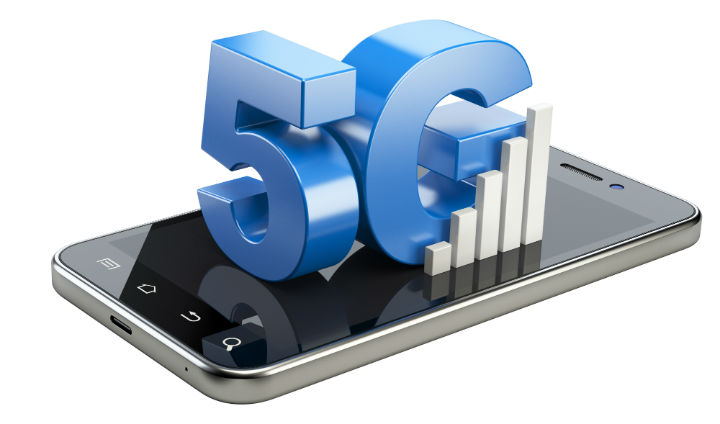The neat linear progression from 2G to 3G to 4G does not apply to next-generation networks.”5G”, the generic term for future communications technologies, offers so much more than just the next level up in speed and data volume. If earlier technologies are like different types of fish, says PeterAshwood-Smith, Chair of ITU-T Focus Group on IMT for 2020, then “5G is the full ocean.”
That analogy may make it easier to understand why there is no clear definition of 5G, why ambiguity persists even amongst experts. What everyone can agree on is immense potential it holds for business, industry, society and individuals.
“You cannot assume that 5G is just 4G on steroids. It is a revolution,” says Kailash Narayanan of Keysight Technologies.
Exponential increases in speed, traffic, reliability and coverage, combined with reduced latency and as yet unimaginable flexibility. Seamless operation across multiple hybrid technologies, where wireless and wired are barely relevant distinctions. A technological platform supporting multiple industries and use cases, a dynamic, fully-configurable network. A network of the future where the real action takes place in the core, in the management and allocation of resources.
Because the promise of 5G lies in the slicing of the network, providing multiple users with exactly what they require, no more, not less, be it ultra-low latency,huge volume, high speed or all three, responding to individual needs in real-time. The best of all possible worlds for all of us, tailored, personalized, responsive and efficient.
5G is driven not just by a relentless quest for progress and technological innovation, but by two key factors: demand for video, and the billions of connected objects of the Internet of Things. Within these two categories, the consumer-oriented and the industrial, what Cisco’s Robert Pepper has described as “the two tales” of 5G, there are innumerable use cases – from virtual dedicated networks transforming vertical sectors such as media, health, energy and manufacturing, to multiple video applications such as holograms, synch viewing or HD 360 degree video. Instead of a killer app, there is a killer vision.
Yet 5G presents very real challenges – of politics, regulation, culture and strategy as much as technology.
Given its revolutionary promise, perhaps it is no surprise that it touches on all the key issues of the ICT industry, all the friction points of a sector which has spent the past 30 years in a constant state of transformation.
Firstly, standardization. The aim is to push for one single global standard for 5G, to create a global level playing field where emerging and developed markets share access to the opportunities of technology. Standardization will open the gates to innovation, universal and at scale.
Then there’s harmonization of spectrum. A scarce and highly-contested resource, spectrum allocation a critical piece of the 5G puzzle. Claiming new bandwidths, reusing or refarming existing frequencies, migrating legacy networks: however it’s done, a predictable 5G spectrum plan is essential to ensure meaningful investment in costly new networks with long cycles of return.
Who makes that investment – and who creates the most value from it – takes the debate on OTT players versus telcos into the next generation. Adjusting to light-touch regulatory approaches might provide an answer, but the challenge there lies not just in keeping the tricky and ever-changing balance between enabling innovation and protecting consumers, encouraging collaboration and ensuring fair competition.
The great potential of the 5G platform lies in the multiple industries and use cases it can support as the critical infrastructure underpinning society in as yet unimaginable ways. The convergence of vertical sectors as diverse as banking, transport and health with the ICT industry creates the need for regulatory convergence, too, for cultural and strategic convergence, in a holistic, multi-stakeholder ecosystem.
The scale of that promise is unprecedented, overwhelming, unpredictable– and matched by the challenge of ensuring security across a heterogeneous mix of devices, requirements and applications. Managing that complexity, orchestrating and administrating configurable slices of network and processing in the core – this is the key to realising the 5G future.
And it’s a future which might be nearer than we think. One of the leading proponents of 5G is KT, leading operator in the host country for ITU Telecom World 2017 and one of the most technologically-advanced nations on earth, the Republic of Korea.
KT has already established a “giga environment,” offering fixed broadband services at giga speed over a mix of technologies. Mobile will follow, with the deployment of 5G, creating a “giga platform” for convergent services in all areas of life and work. The first 5G pilot service will be tested at the 2018 Winter Olympics in PyeongChang. As a company at the forefront of 5G, KT’s contribution to the international exhibition and expert debates at ITU Telecom World 2017 this September promises to be fascinating. And let’s not forget: 5G itself is just the beginning.
To find out more on ITU Telecom World 2017, taking place in Busan, Republic of Korea, from 25 -28 September, visit telecomworld.itu.int.




